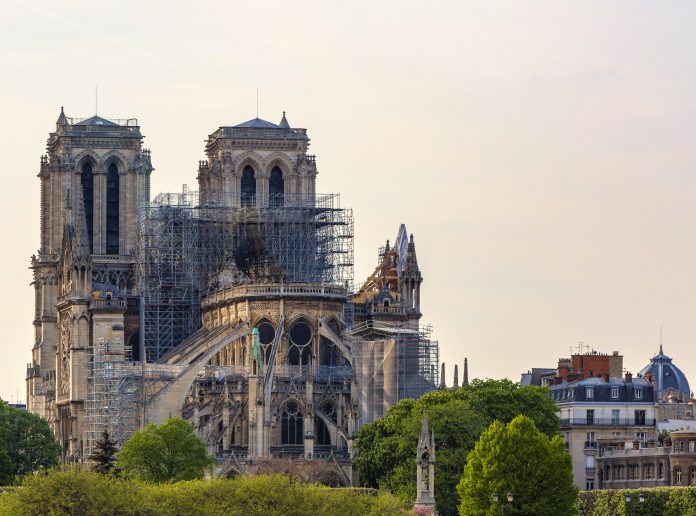Five years after the fire, Notre-Dame Cathedral is back to its former splendour, with reconstruction and renovation almost complete, French media reported.
On 15 April 2019, flames burst out of the world-famous cathedral all evening. TV viewers around the world watched live as the huge spire collapsed. Shortly afterwards, President Emmanuel Macron visited the church and promised: we will completely rebuild Notre Dame in five years. His promise was the object of ridicule and criticism, but it was fulfilled.
Just to completely rebuild the spire, 1,000 oak trees had to be cut down. Stones, wood, glass and lead: all worked, supplied and customised by more than 1000 craftsmen from 250 companies from all over France, from sculptors to carpenters and from blacksmiths to coppersmiths. And here’s the big organ: 8,000 pipes are now being cleaned and patched where necessary so that they will soon sound as normal.
The spire has been largely restored and is once again 96 metres high. The scaffolding and scaffolding is gradually being removed. Eight months later, on 8 December, the doors will reopen to visitors.
Some say it is a miracle: the construction of the cathedral began in 1163 and took at least 200 years. And in just five years, the church building has been restored to its former splendour. An architectural historian Mathieu Lours, who is affiliated with the University of Cergy-Pontoise and is considered one of the specialists in France when it comes to the construction of churches and cathedrals, said:
“Of course, Notre-Dame did not burn down completely. Part of the roof, the vaults and the woodwork had to be rebuilt. The stone walls were almost entirely left standing. So it was doable within five years.”
Immediately after the fire, a fund was opened for donations to rebuild. The counter now counts 846 million euros in donations from 340,000 individuals and institutions from 150 countries. The cost of rebuilding Notre-Dame is estimated at around 700 million euros. Any remaining money “will stay at Notre-Dame,” insiders say. They may be used for additional construction work.
One of the new additions to Notre-Dame is an extensive new fire installation. Judges still don’t know exactly what caused the fire five years ago: a short circuit, a burning cigarette butt: anything is possible, but in any case a recurrence must be prevented.
Sprinkler systems have been installed front and back under the new wooden roof. State-of-the-art smoke and fire detectors and thermal imaging cameras have been installed, and two fire-resistant walls are being erected to prevent the spread of fire.
In December, the cathedral regained its large cross and received a new golden rooster to replace the one destroyed in the fire.
President Emmanuel Macron originally promised that the building would be fully restored in time for the opening of the Olympic Games, but after restoration work stalled, the deadline was pushed back. Starting in the autumn, the cathedral grounds and entrance areas will be cleared so that exterior work can begin.
France has just launched a tender to create modern stained glass windows for Notre Dame, to be delivered in 2026.
